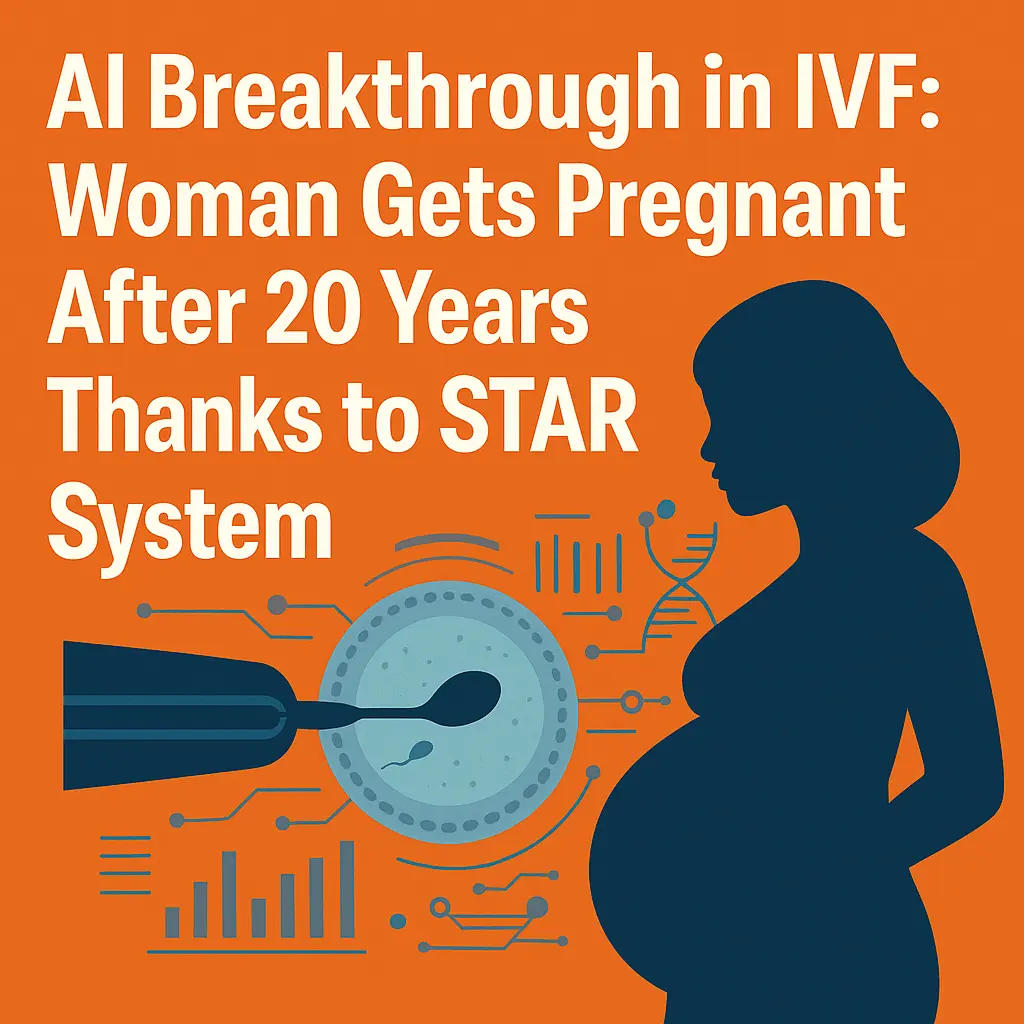🔍 Background
After 20 years of heartache and 15 failed rounds of in vitro fertilization (IVF), a couple finally saw their dreams realized—thanks to artificial intelligence. The woman, who had exhausted traditional fertility treatments, became pregnant after doctors at Columbia University applied a revolutionary AI system called STAR to assist with male-factor infertility, specifically azoospermia, a condition where no sperm are present in semen.
Infertility affects roughly 1 in 6 people globally. While IVF has helped many, it often falls short for complex cases—especially those involving male infertility. That’s where STAR comes in.
🧠 Methodology: How STAR Works
Developed by a research team led by Dr. Gianpiero Palermo at Weill Cornell Medicine and Columbia University, STAR (short for Sperm Tracking and Retrieval) uses computer vision and machine learning to identify extremely rare viable sperm in samples from azoospermic men.
Traditional lab methods involve manual sorting under a microscope—labor-intensive and often inaccurate. STAR analyzes thousands of microscopic frames per second, automatically pinpointing live sperm cells and tracking their movement patterns.
Once identified, those sperm cells can be extracted and used in IVF through intracytoplasmic sperm injection (ICSI), where a single sperm is directly injected into an egg.
🌍 Implications and What’s Next
This historic case isn’t just a personal victory for one couple—it signals a paradigm shift in reproductive medicine. Here’s why it matters:
- New hope for azoospermia patients: This AI-assisted approach can help men who were previously told they had no options.
- Improved IVF efficiency: Reducing failed cycles saves time, money, and emotional strain for countless families.
- Ethical precision: STAR adds objectivity and accuracy to sperm selection, potentially minimizing risks tied to human error or subjective judgment.
Experts believe the technology could be scaled globally, assisting clinics and boosting success rates for one of the most emotionally taxing medical journeys: fertility treatment.
🧬 The Human Side of AI
While headlines often focus on flashy AI applications like ChatGPT or self-driving cars, STAR is a reminder of the deeply personal and life-affirming ways AI can change lives. In this case, it didn’t just solve a problem—it created a life.

